Isabel Orriss
N-acetylcysteine (NAC) differentially affects arterial medial calcification and bone formation: the role of L-cysteine and hydrogen sulphide
Orriss, Isabel; Bourne, Lucie E; Patel, Jessal J; Davies, Bethan K; Neven, Ellen; Verhulst, Anja; D'Haese, Patrick C; PD Wheeler-Jones, Caroline; Orriss, Isabel R
Authors
Lucie E Bourne
Jessal J Patel
Bethan K Davies
Ellen Neven
Anja Verhulst
Patrick C D'Haese
Caroline PD Wheeler-Jones
Isabel R Orriss
Contributors
Isabel Orriss
Project Leader
Abstract
Arterial medial calcification (AMC) is the deposition of calcium phosphate in the arteries. AMC is widely thought to share similarities with physiological bone formation; however, emerging evidence suggests several key differences between these processes. N-acetylcysteine (NAC) displays antioxidant properties and can generate hydrogen sulphide (H2S) and glutathione (GSH) from its deacetylation to l-cysteine. This study found that NAC exerts divergent effects in vitro, increasing osteoblast differentiation and bone formation by up to 5.5-fold but reducing vascular smooth muscle cell (VSMC) calcification and cell death by up to 80%. In vivo, NAC reduced AMC in a site-specific manner by 25% but had no effect on the bone. The actions of l-cysteine and H2S mimicked those of NAC; however, the effects of H2S were much less efficacious than NAC and l-cysteine. Pharmacological inhibition of H2S-generating enzymes did not alter the actions of NAC or l-cysteine; endogenous production of H2S was also unaffected. In contrast, NAC and l-cysteine increased GSH levels in calcifying VSMCs and osteoblasts by up to 3-fold. This suggests that the beneficial actions of NAC are likely to be mediated via the breakdown of l-cysteine and the subsequent GSH generation. Together, these data show that while the molecular mechanisms driving the actions of NAC appear similar, the downstream effects on cell function differ significantly between osteoblasts and calcifying VSMCs. The ability of NAC to exert these differential actions further supports the notion that there are differences between the development of pathological AMC and physiological bone formation. NAC could represent a therapeutic option for treating AMC without exerting negative effects on bone.
Citation
Orriss, I., Bourne, L. E., Patel, J. J., Davies, B. K., Neven, E., Verhulst, A., D'Haese, P. C., PD Wheeler-Jones, C., & Orriss, I. R. (in press). N-acetylcysteine (NAC) differentially affects arterial medial calcification and bone formation: the role of L-cysteine and hydrogen sulphide. Journal of Cellular Physiology, https://doi.org/10.1002/jcp.30605
| Journal Article Type | Article |
|---|---|
| Acceptance Date | Sep 8, 2021 |
| Deposit Date | Feb 3, 2021 |
| Publicly Available Date | Oct 25, 2021 |
| Journal | Journal of Cellular Physiology |
| Print ISSN | 0021-9541 |
| Electronic ISSN | 1097-4652 |
| Publisher | Wiley |
| Peer Reviewed | Peer Reviewed |
| DOI | https://doi.org/10.1002/jcp.30605 |
| Public URL | https://rvc-repository.worktribe.com/output/1443639 |
Files
Gold OA
(8.9 Mb)
PDF
Publisher Licence URL
http://creativecommons.org/licenses/by/4.0/
NAC Paper Figures JCellPhysiol Final Revised V2
(2 Mb)
PDF
Publisher Licence URL
http://creativecommons.org/licenses/by/4.0/
You might also like
Pathological calcification in canine tendon-derived cells is modulated by extracellular ATP
(2024)
Journal Article
Editorial: Special issue on purinergic signalling and calcification
(2023)
Journal Article
Downloadable Citations
About RVC Repository
Administrator e-mail: publicationsrepos@rvc.ac.uk
This application uses the following open-source libraries:
SheetJS Community Edition
Apache License Version 2.0 (http://www.apache.org/licenses/)
PDF.js
Apache License Version 2.0 (http://www.apache.org/licenses/)
Font Awesome
SIL OFL 1.1 (http://scripts.sil.org/OFL)
MIT License (http://opensource.org/licenses/mit-license.html)
CC BY 3.0 ( http://creativecommons.org/licenses/by/3.0/)
Powered by Worktribe © 2025
Advanced Search
